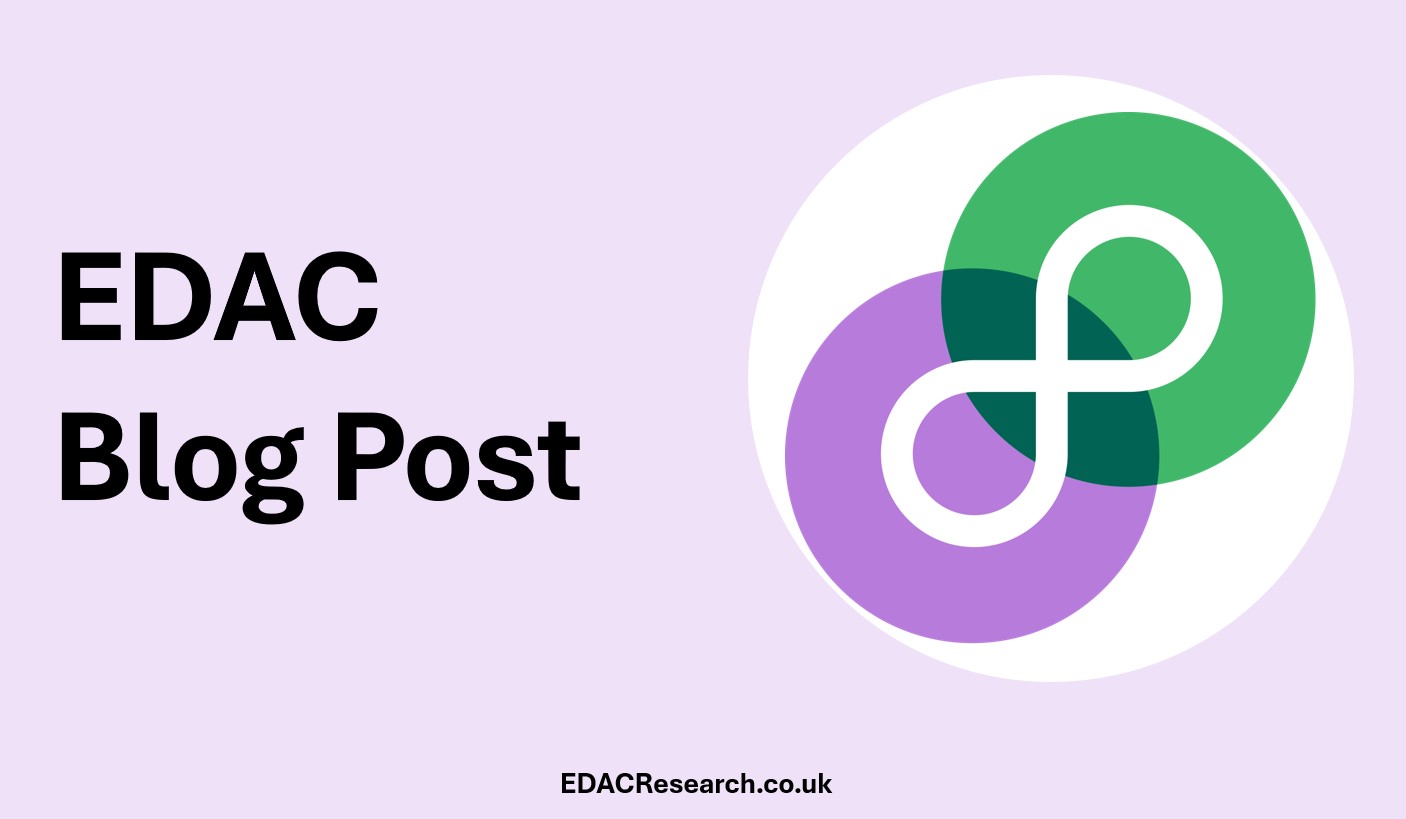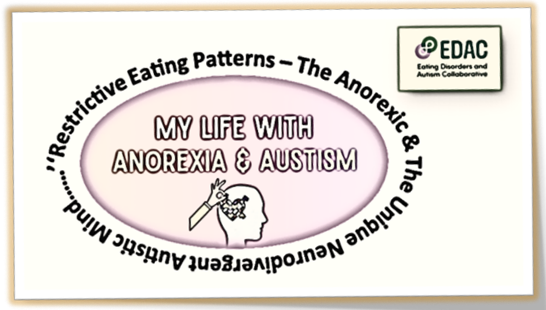Eating Disorders (EDs) Among the South Asian British Population... A Personal Reflection by a South-Asian British Recovering Anorexic

At EDAC we are committed to highlighting the voices of Autistic people with lived/living experience of an eating disorder. EDAC is happy to share a blog post written by one of our EDAC collaborators, titled "Eating Disorders (EDs) Among the South Asian British Population... A personal Reflection by a South-Asian British Recovering Anorexic". A huge thanks to our collaborator for their time in writing this piece based on their experiences as an Autistic person with an ED.
------------------------------------------------------------------------------------------------------------------------------------------------------------------------------
"Eating Disorders (EDs) Among the South Asian British Population... A personal Reflection by a South-Asian British Recovering Anorexic"
- EDAC Collaborator
------------------------------------------------------------------------------------------------------------------------------------------------------------------------------
From a young age, I’ve spent my life
fighting Anorexia Nervosa, a serious psychological Eating Disorder. Even now I
find it difficult to articulate how deadly this Eating Disorder is.
As a South-Asian British recovering
anorexic I’ve experienced first-hand the culture surrounding mental illness
within my community. Rather than being seen as a real illness that warrants the
same attention and level of care as physical ailments, Eating Disorders are
frequently dismissed and denied. Sufferers are often stigmatised or silenced.

It is empowering to share my personal journey of survival and recovery. It refutes the stereotype of Eating Disorders affecting only young, affluent, white women. In reality, Eating Disorders affect people of all genders, ethnic groups and ages. However, the experience for sufferers in a BAME (Black, Asian and Minority Ethnic) community can be very different.
Mental illnesses remain a taboo topic in many BAME communities[i]. Girls and women in the South-Asian community face cultural
and societal pressures which can trigger or exacerbate disordered eating habits
and behaviours. The female role carries an expectation to look good. Being
light-skinned and thin is seen as necessary to be considered attractive.
Furthermore, it’s common in these communities to have family, friends and
relatives commenting on one’s physical appearance.
Food plays a major role in
South-Asian culture, and this presents a challenge for anyone with an Eating
Disorder. Gatherings of family and friends invariably focus on food, and there
is a strong expectation to socialise and eat. Those who do not partake are seen
as antisocial and their motives are misunderstood.
Eating Disorders are often denied in
my community. Family and friends can’t grasp why you can’t eat, and can exert
overwhelming pressure. They assume you’re not eating on purpose, to disobey or
spite them. You’re accused of not listening, of being dismissive of their
wishes. They can’t understand that you want to please them but there is
something compelling you not to eat.
Even when mental illnesses are
acknowledged, South-Asian British people face unique barriers to seeking
treatment[ii]. Even after diagnosis, sufferers may
not want to visit the doctor because they worry that the illness will be seen
by their family as failure in parenting or upbringing. They fear it will
adversely impact their education and they will fail to meet parental
expectations.
In order to bring about positive
change, we need to encourage a compassionate, understanding society where
people feel able to talk about their illness. We need to ensure a greater
understanding of the complexities of Eating Disorders and the associated mental
health difficulties. Literature and research on Eating Disorders amongst the South
Asian population in Britain are limited[iii],
resulting in ignorance and misunderstanding of the condition. We need to
be creative in how we campaign to create better awareness of Eating Disorders
within BAME communities, for example, forming inclusive support groups, finding
BAME celebrities to share their experiences and using local communication
platforms to highlight the condition and available treatments. This could help
to reduce healthcare inequalities and impress upon our community that Eating
Disorders are real, complex, and devastating conditions with serious, sometimes
fatal, consequences. The earlier treatment is sought, the better the sufferer's
chance of recovery[iv].
As a recovering anorexic I’ve learnt
that quality of life is more important than how I look. Eating Disorders are
far from trivial and I’m compassionate towards myself during recovery, I don’t
judge my past battles and I don’t feel ashamed of my struggles.
Eating Disorders do not
discriminate. Nor are they obvious in presentation. I’m passionate about
creating the right support and understanding from our society, raising greater
awareness, and eradicating the stigma associated with Mental Health. Below I
offer my own personal journey and insights to help raise awareness and reduce
misconceptions.
________________________
Mental Health Foundation » Black, Asian and Minority Ethnic (BAME) communities. » [2019] » Available at: https://www.mentalhealth.org.uk/a-to-z/b/black-asian-and-minority-ethnic-bame-communities
John Wiley & Sons, Ltd and Eating Disorders Association. » [2010] » Available at: https://onlinelibrary.wiley.com/doi/abs/10.1002/erv.1033
Exploring barriers to South Asian help-seeking for eating disorders, Mental Health Review Journal, 10.1108/MHRJ-09-2016-0017, 22, 1, (40-50), (2017). Cross ref
Beat Eating Disorders - GP-Briefing-Document » [2017] » Early intervention on eating disorders. The crucial role of GPs. Available at: https://www.beateatingdisorders.org.uk/uploads/documents/2018/5/gp-briefing-document.pdf
_________________________
A letter I wrote to myself below,
reflecting on my own battle and I read during tough times to remind me of the
personal and emotional journey.
Story of a young girl with Anorexia Nervosa:
How Anorexia became a life?
Shivering, she gazed into cold, winter morning, waiting for
someone, anyone, to distract her from this terrible urge to exercise. Every
morning at 5am sharp she got up and started the morning with compulsive running
for 41 minutes 35 seconds exactly followed by 34 minutes 9 seconds of abdominal
workout. The obligation to get the numbers precise was so important that if she
inadvertently miscounted she would have to restart the whole obsession again.
She counted from zero until her desired number, which always rose but never
diminished. The drive to work out more in order to accomplish her one and only
dream to be stick thin was at its height in the morning and failure was not an
option; she had to.
It was January 2000 and she had a compelling goal to lose
weight. At first she felt marvellous and was very content, that by exercising
and avoid eating food, she could lose a bit more weight.
Months flew by since the business of her consuming minimal food intake, followed by purging and then burning off whatever remained in her body by exercising. The sensation she was experiencing was incredible because ‘Anorexia’, her one and only companion, had opened her eyes and gave her a new meaning in how to live her life. It made her satisfied with every decision she took.
The girl, who had experienced problems, felt that by
starving her body and exercising she could feel the real pain that she wanted
to feel; that she deserved. She felt her life had been lost somewhere along the
way and was demonstrating it in her anguish towards her hatred of her
body. The sense of her loneliness and her lack of loving people in her
life had really made the girl feel that she did not know where or who she
belonged to anymore. The girl’s life obtained some meaning with her friend Anorexia,
who never left her side. For her, Anorexia gave her a big hug or smile when she
needed one and loved her when she had no-one else. It welcomed her with open
arms and she felt euphoric with her friend by her side.
No-one knew for a long time about this girl’s secret
relationship. She did not know herself at the start. It crept up on her and
slithered into her without her feeling anything. Soon the two parts melted
together and they became part of each other. It was difficult to see where one
started and the other finished.
Slowly her family and friends noticed a change within her.
The way she acted, how quiet she got, little things that eventually grew into
bigger things. When the world began to realise how Anorexia was destroying this
girl’s life it was too late. Anorexia completely dominated her life. The girl
stopped having a say in her own life, she could not refuse Anorexia’s demanding
commands. People’s awareness of the girl’s poor appetite and rapid weight loss
finally became an instant and dangerous message for them; the worries of losing
the beautiful girl overwhelmed them. The girl was disturbed to see the despair
on people’s faces. At first they had been compassionate to her but this turned
to hopelessness and resentfulness. It was hard for the girl to tolerate.
The situation had become so intense that not even the
doctors could convince the confused girl to start eating more and reduce her
excessive exercising. The thoughts and overwhelming feelings had completely
devoured her life. Each day the girl caught a battle with the waiting mirror;
she can’t stand the person staring back at her. Her emotions were tormented,
and even though she was severely underweight she believed she was the fattest
person in the world.
Anorexia had made the girl isolate herself. Friends fought
to get through to her. They wanted the girl to listen to their ideas to make
the girl’s life a better place to be. They tried to persuade her that her world
did not have to be like this. They prophesied happiness, love and friendship in
her future. But whilst they were talking softly, Anorexia was shouting and
cursing in her ear telling her to ignore them.
Anorexia became her identity. That’s all she ever thought of herself as; that’s what she had become. Time stumbled on and Anorexia’s grip of the girl stayed constant. She felt there was no meaning to her life without this friend, and people’s intrusion as they tried to show their ability to be caring and loving was not enough for her to see how important, unique and worthwhile a person she was. The blackness of her thoughts made her block the real world out of her life. It was impossible for the girl to stop all this from happening, time became too desperate and things were out of her control.
Once again at the dawn of a new day the lonesome girl still
stood shivering, gazing out of the same window, waiting for someone or
something to help her, thinking how Anorexia came so secretly into her life.
Anonymous - Contributed & Written By: A South-Asian British Recovering Anorexic.
Share